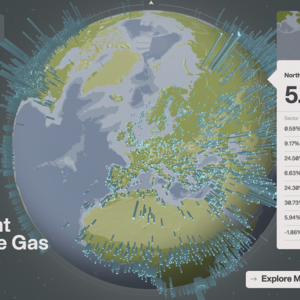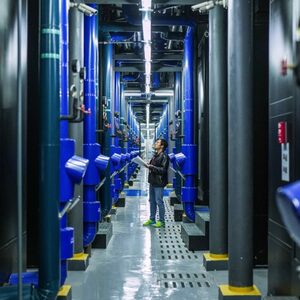
Consider the year 1999. Swing music was inexplicably resurgent, John Malkovich was a meme before there were such things, and half the world was convinced that planes would start falling from the sky once the clock (presumably GMT) struck 2000. The internet was very much part of our lives, but only to the extent that wearing hats is for most of us today, which is to say, intermittent. Of course, many could read the writing on the wall.
Those who recognized the impending sea change generally fell into two camps: one saw the internet as a transformative tool that could democratize data and information; the other saw its adverse potential to rewrite the capitalist playbook, as something that demanded restraint. (History has proven neither wrong.) Today, as we approach Q2 of the 21st century, humanity stands at a similar precipice. This time, it’s AI.
From simulation to prediction
The advent of OpenAI’s ChatGPT, in November 2022, was a true watershed moment. Everything we had theoretically feared and/or heralded for many years prior was now, to some degree, manifest—a machine with intuition, that can self-correct. Its impacts have already been felt in industries ranging from finance and medicine to engineering and transportation. But consider that some AI researchers have rejected the notion of autonomous “machine learning” in place of something more digestible, that AI behaves—and is trained as—a “reasoning engine.” If this prognosis is true (and frankly, even if it’s not), it behooves humankind to understand and deploy—with measured restraint—AI’s current and potential role in decarbonizing much of the global real estate sector.
“We’re using AI to improve accessibility to designers, for things that relate to building optimization simulations,” says Yehia Madkour, a principal and director of innovation at Perkins & Will. “We have surrogate machine learning models that allow us to accelerate the computation [that’s needed] for simulations.” Standard simulation software used to measure building energy loads, EUI targets, operational carbon intensity, heat mapping, and more all require time, and time is the X factor. Performing such detailed calculations can be disruptive for the design process, Madkour says. “What we’re trying to do with AI is move from a space of simulation to a space of prediction.”
By accelerating and compressing the simulation processes, Madkour argues, it gives design teams greater accessibility to a trove of data that would otherwise be fragmented and must be handed off in piecemeal to energy modelers, sustainability advisors, and so forth. Still, this represents a “defined boundary” within which such AI models are permitted to operate. “We’re feeding it the problem and the solution, and thousands more problems and solutions, so that later on, it’s able to find the solutions to new problems,” he says.
Learning is the engine of intelligence
If we want AI to actively learn and we also want to avoid the theoretical outcome of it achieving the “singularity,” the autonomous state where AI can no longer be contained, then we have a tightrope walk ahead of us.
AI-assisted design engines have already become ubiquitous—Imagine, DALL-E, NightCafe, Craiyon, LimeWire, and the list goes on. One standout is Midjourney, an AI bot that can summon built dreamscapes when given a descriptive but simple command, aka “text-to-art.” Architect Mark Alan Hewitt, writing recently in Common Edge, says “Regardless of the sheer power of digital technology to crunch data and speed up design of any kind, nothing about the nature of artificial intelligence … will convince me that it can replace the cognitive power of experienced master designers and artisans. The latter, in particular, have embodied knowledge that cannot be replicated by any machine or computer.”
Hewitt’s skepticism is understandable, even uplifting, but arguably misguided. Tasking AI models to arrive at plausible mimics of designers’ “cognitive power” is not the preoccupation of those who toil in the depths of neural networks to find practical solutions to real world problems. Rather, the objective is to leverage AI—at least among those acting in good faith—to embolden and elevate that very human “embodied knowledge.” This is where we return to the question of cleaning up buildings.
By giving AI models a defined problem, we can task it to parse through things like energy and building codes, zoning ordinances, municipal by-laws, traffic patterns, travel distances, heat maps, EPDs for building materials, and other considerations that, while all worthwhile, tend to dilute (and delay) the industry’s ability to deliver streamlined, low-carbon projects. “In one way, we’re using [AI] to create a tool that allows us to do feasibility studies around adaptive reuse,” Madkour says. “So, when we’re thinking about existing building stock, how do you go through that first assessment and [build an] understanding of whether there are certain criteria to be met?” In particular, he cites relevant scenarios where developers wish to change a building’s use from office to residential and do so responsibly. In that regard, arriving at corresponding solutions to a common problem can and arguably should become the purview of AI.
An openness to experiment
“We’re closer to understanding the use of AI [in tracking] operational carbon and the way we use buildings throughout their life,” Madkour says. Developing similar automated workflows to track embodied carbon, however, remains far off. The databases that enable builders and designers to better understand what’s going into buildings, and accurately assess the built environment’s true environmental footprint, just aren’t up to snuff, he says. “We need to further build our databases and material passports.” The holistic data “does not exist yet.” There are some who might take issue with that assessment.
Sam Ramadori, CEO of BrainBox AI, wants to take autonomous AI and teach it to behave basically like an energy service company (ESCO), which provides energy efficiency and cost-savings solutions for building owners. “Our focus is on existing buildings’ heating and cooling systems, getting them to be significantly more efficient, and help the decarbonization journey of the built environment,” he says. Currently, BrainBox’s proprietary AI is plugged into “a couple thousand” buildings throughout North America, Europe, the Middle East, and Australia, by Ramadori’s estimate. “The fortunate thing about our technology is it’s scalable, even globally.”
According to Ramadori, the shortcomings of traditional ESCO’s that monitor room-to-room CO2 levels, humidity, temperatures, occupancy, and so forth, is that whatever data is gleaned from building sensors is used for automation, not learning. “It’s a closed system that just knows that the thermostat says it’s cold … turn on a fan, heat some air, move it into the next room. But then that data just sits there. And in about a week that [centralized] computer will run out of space and write over the old data. We’re throwing away valuable data!”
With broader and more comprehensive reams of data to draw from, buildings systems can go from knowing what’s happening in real time to knowing what is going to happen, and achieve efficiencies that standard automation systems are incapable of, at least in a way that is scalable and cost conscious. “It’s taking control of the system and making smarter decisions on very granular basis with thousands of pieces of equipment,” Ramadori says.
For his part, Madkour confides that the building and construction industry as a whole remains quite conservative in its deployment of AI to date. It’s “too skeptical,” he says. “The appetite to experiment is way less than it needs to be.” He attributes this, in part, to architects’ preference for “bespoke solutions.” “The ability to innovate and research and change your tools gets limited by this reality that each building has to be its own project, versus doing things at scale.”
For the time being, AI’s applications when it comes to realizing a cleaner, low-carbon future for buildings are in their nascent stages. Using models to perform benchmarking is arguably the first step. And achieving the kind of smart building integration that many pioneers in this arena envision will require due restraint, less such systems begin to feel intrusive and rob users of their autonomy, such as it is. AI’s ability to engage, reason, and find practical solutions is only as good as the datasets we produce. In the short and long term, we gain nothing by abstaining from building out that data to its fullest and most holistic potential.
________________________________________________________________________
Justin R. Wolf is a Maine-based writer who covers green building trends and energy policy.
Weekly Newsletter
Get building science and energy efficiency advice, plus special offers, in your inbox.















3 Comments
Can't find much to disagree with in this! I expect that AI design will
pretty much eliminate most of the problems associated with energy
efficiency as opposed to costs (both economic and environmental).
Likely, the only design work remaining for humans will revolve around
creativity and aesthetics.
Science fiction writers have long pictured the wonders of an AI dominated
technology -
BE CAREFULL WHAT YOU WISH FOR!
I tried using ChatGPT to help design my shed/workshop. It was helpful for quickly brainstorming different designs, layouts, and landscaping (with native plants for example). It requires direct prompting though and wading through the text it generates.
It's no replacement for sites like Green Building Advisor, Fine Homebuilding, JLC, Hammer and Hand, or Building Science Corp, but it's a decent tool.
I used ChatGPT to confirm my Manual J calcs, and the result was within +/- 10%. That said, garbage in = garbage out. I had to provide the model with a all the same information, to some extent (I may have blended some metrics together), but it was a bit easier and nicer than going through the pay-to-play apps.
https://www.greenbuildingadvisor.com/question/chatgpt-4-0-and-manual-j
Log in or create an account to post a comment.
Sign up Log in